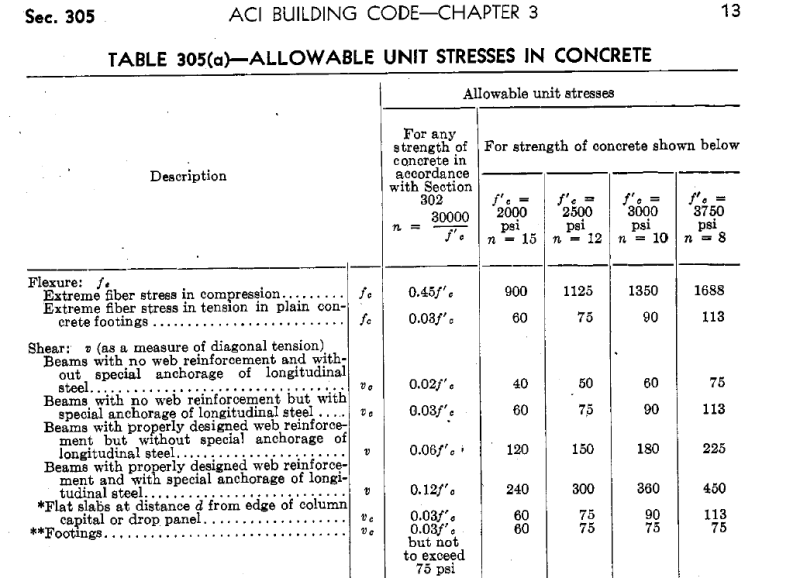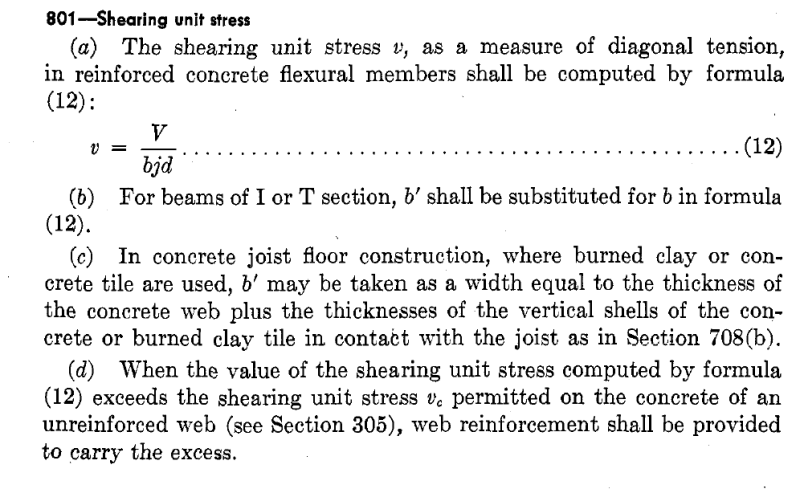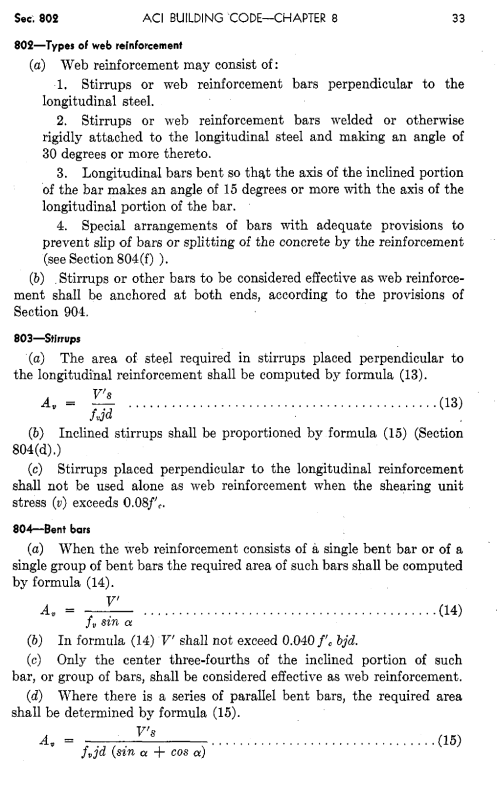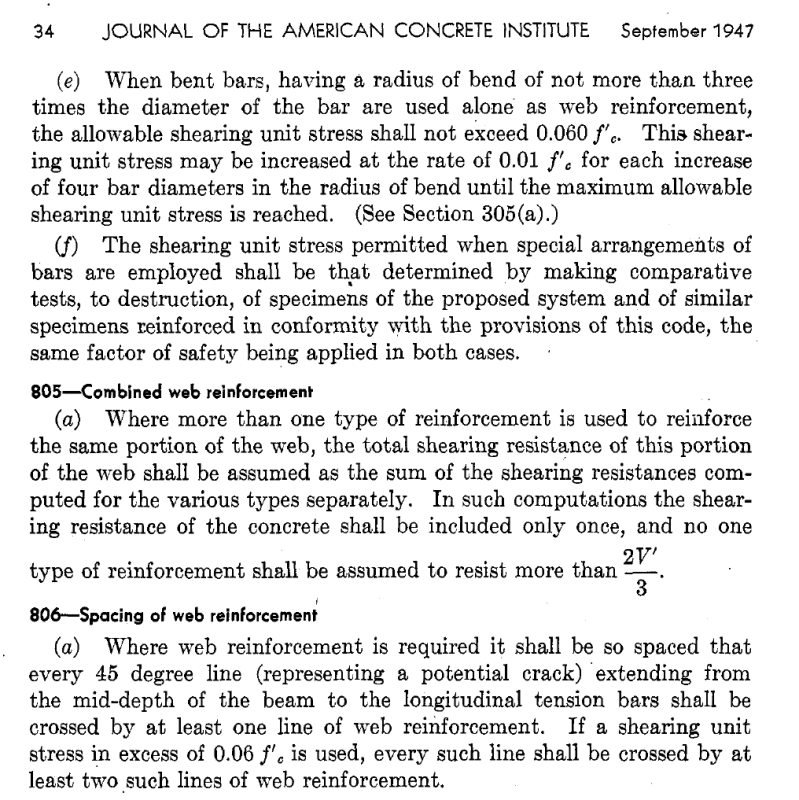I am checking a waffle slab building built in 1956, in particular the shear strength of the waffle ribs. Does anyone know answers to any of the following:
a) the ACI permissible working strength design shear stress for the ribs (i.e. similar to joist ribs)?
b) was the shear checked at the effective depth from the support face (which for the ribs would be "d" from the face of the solid area of slab surrounding the supporting column)?
c) were there CRSI table available in 1956; if so, does anyone have them?
I have the National Building Code of Canada 1960, so I know what was done then (90 psi permissible shear stress) and check "d" from support face), but that may have been different from what was in 1956, and in any event I suspect the waffle design would have been selected from the CRSI Tables, if there were CRSI Waffle Slab Tables in 1956.
a) the ACI permissible working strength design shear stress for the ribs (i.e. similar to joist ribs)?
b) was the shear checked at the effective depth from the support face (which for the ribs would be "d" from the face of the solid area of slab surrounding the supporting column)?
c) were there CRSI table available in 1956; if so, does anyone have them?
I have the National Building Code of Canada 1960, so I know what was done then (90 psi permissible shear stress) and check "d" from support face), but that may have been different from what was in 1956, and in any event I suspect the waffle design would have been selected from the CRSI Tables, if there were CRSI Waffle Slab Tables in 1956.




